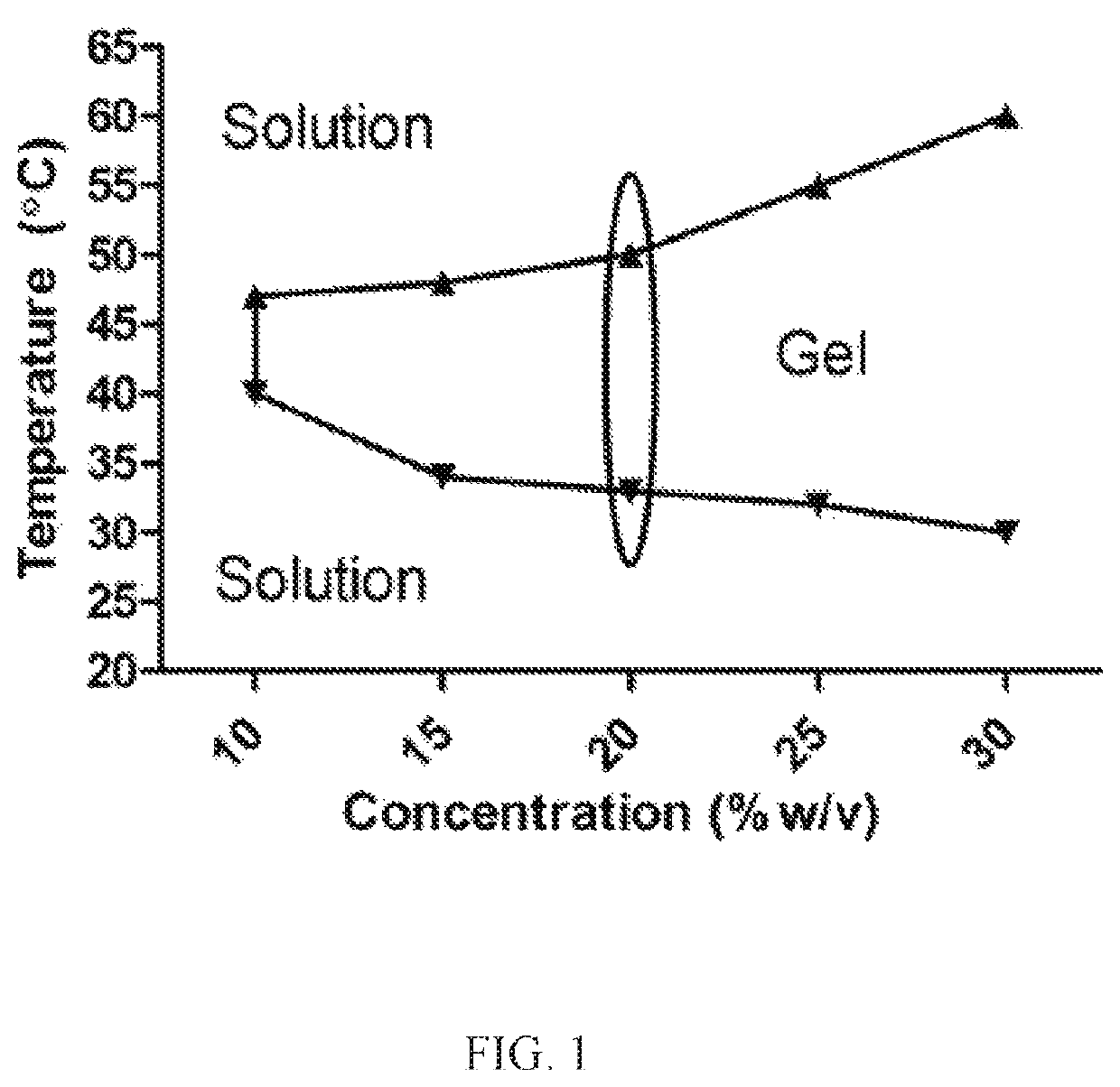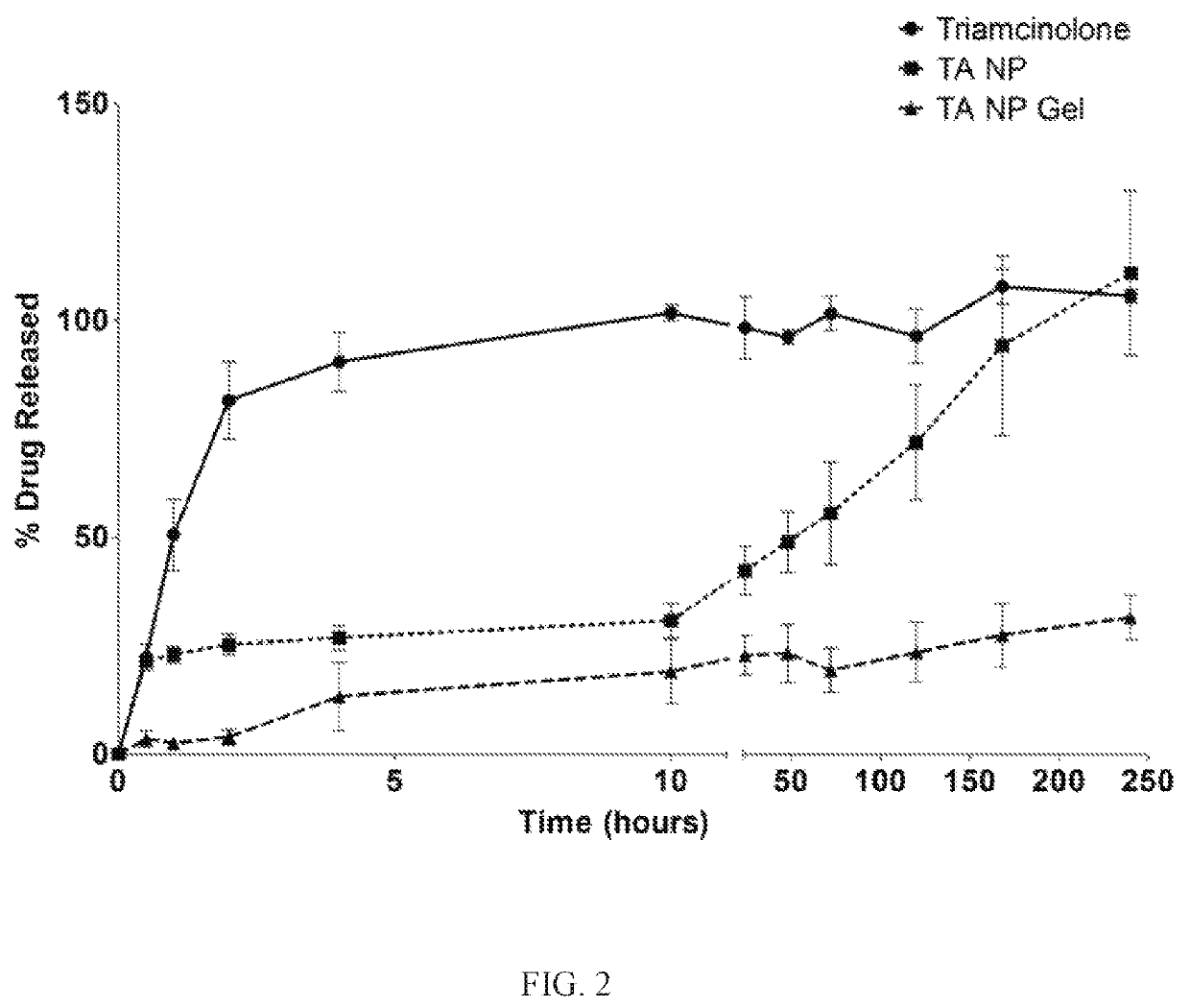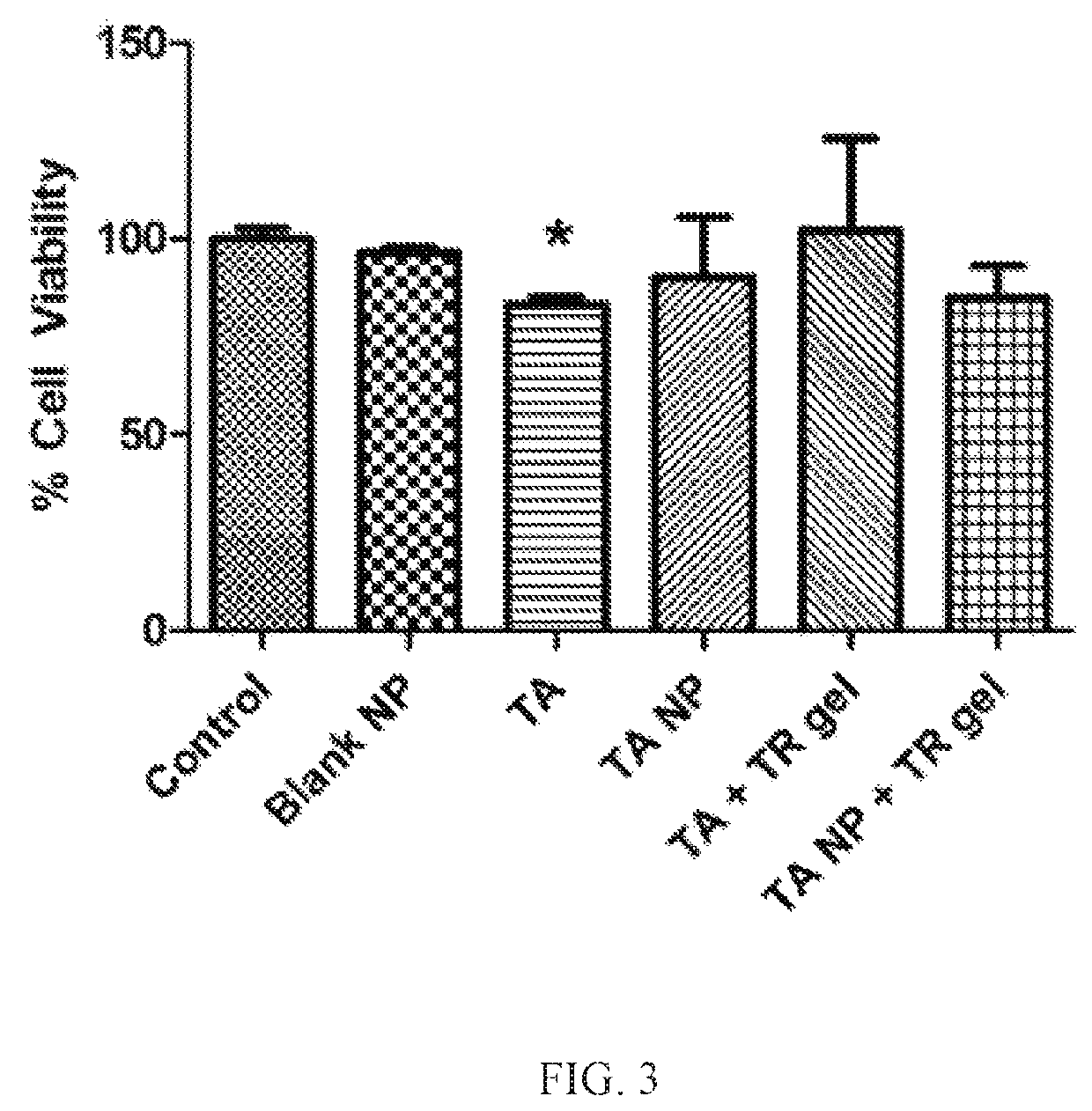Nanoparticles in thermoreversible gels for enhanced therapeutics
a technology of nanoparticles and gels, applied in the direction of nanocapsules, capsule delivery, drug compositions, etc., can solve the problems of retinal detachment, low patient compliance, side effects, etc., and achieve the effect of reducing the frequency of intraocular injections, reducing vegf expression, and sustained drug releas
- Summary
- Abstract
- Description
- Claims
- Application Information
AI Technical Summary
Benefits of technology
Problems solved by technology
Method used
Image
Examples
Embodiment Construction
[0018]AMD, a progressive, inflammatory eye disease, is one of the leading causes of blindness. It has been estimated that 36.8 million people suffered from some sort of vision loss due to eye diseases in the United States in 2010. AMD affects the posterior segment of the eye by damaging retinal pigment epithelium (RPE) cells which leads to a loss of central, focused vision through the abnormal growth of blood vessels damaging the macula of the retina, the area responsible for fine vision. The presence of intraocular debris may induce an inflammatory response which may cause further damage to the retina through the induction of a sustained immune response. Advanced AMD is characterized by choroidal neovascularization (CNV), the growth of abnormal blood vessels beneath the RPE or between the RPE and retina, accompanied by fluid and blood rupturing Bruch's membrane into the subretinal space and leading to retinal irregularities. Physical ocular barriers and routes of treatment pose lim...
PUM
| Property | Measurement | Unit |
|---|---|---|
| particle size | aaaaa | aaaaa |
| size | aaaaa | aaaaa |
| wavelength | aaaaa | aaaaa |
Abstract
Description
Claims
Application Information
 Login to View More
Login to View More - R&D
- Intellectual Property
- Life Sciences
- Materials
- Tech Scout
- Unparalleled Data Quality
- Higher Quality Content
- 60% Fewer Hallucinations
Browse by: Latest US Patents, China's latest patents, Technical Efficacy Thesaurus, Application Domain, Technology Topic, Popular Technical Reports.
© 2025 PatSnap. All rights reserved.Legal|Privacy policy|Modern Slavery Act Transparency Statement|Sitemap|About US| Contact US: help@patsnap.com



